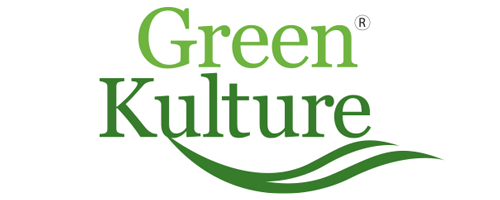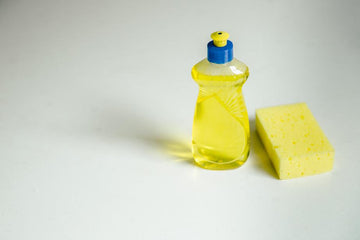REDEFINING WHAT A DISHWASHING LIQUID SHOULD BE
The public can easily be forgiven for believing that the current range of modern dishwashing liquids are harmless. They now come in bright colours, with added fragrances and lyrical names such as Natural Extracts Aloe Fresh, Citrus Burst, Floral Breeze and Purple Herbal. But it’s what actually lurks inside of that plastic bottle that will surprise you! Think of what these detergents have to deal with: rotten food, burnt-on grease and grime of all kinds. A quick rinse under the hot-water tap clearly isn’t enough. What’s needed is a serious cleaning action. The answer, according to the dishwashing-liquid industry, is to use a cocktail of dangerous industrial chemicals.
The primary ingredient doing most of the work in dishwashing liquids are substances called “surfactants” short for surface active agents. As the name implies, these are chemicals that affect surface tension, in this case, the surface tension of water.
Surfactants work by allowing water molecules to attach themselves to substances, such as grease, that are normally not soluble in water. They achieve this by having a water loving end and an oil loving end. The manufacturing industry uses surfactants fairly widely as degreasers, and what’s in your bottle of Dishwashing Liquid is essentially no different. It’s just that there’s less of it in a bottle of dishwashing liquid than in an industrial plant.
Did you know that manufacturers can still get away without listing the chemicals used in cleaning products? They are not legally obliged to disclose any of the ingredients. Biodegradable anionic and ionic surfactants is all many of them list. These terms include an almost endless list of chemicals, therefore it is impossible to know exactly what is in the formulation. What are they trying to hide? Many traditional and alternative companies use surfactants which are petroleum-based and may contain alkylphenol ethoxylates, which are suspected of being hormone disrupters even at small doses (Ann Occup Hyg, 2003; 47: 44159).
Another consideration is what happens to the detergent after it has been flushed down the drain. Many are derived from petrochemicals and persist in the environment. A 2001 in-depth study (Environmental Project No. 615) by Denmark’s Environmental Protection Agency discovered that, although most surfactants bio-degrade in the air, they can accumulate in aquatic species, causing potentially serious damage. According to the report, many typical surfactants are toxic to aquatic organisms.
NATURAL SAFE ALTERNATIVES?
Many of the new range of so-called natural or organic dishwashing products fail to live up to their claims. An eco sounding name and top price tag are no guarantee of safe ingredients. Natural doesn’t always mean safe. For example, the most common source of so called natural surfactants is coconut oil. Although some coconut-derived compounds are harmless, many are not. One of the known nasties is cocamide DEA which is known to be a skin irritant (Contact Dermat, 1999; 40: 98103). Worse still, cocamide DEA may cause cancer, as it can form nitrosamines, chemical compounds known to cause lung and liver cancers, among others (Cosmetic Ingredient National Library of Medicine. HazMap: Occupational Exposure to Hazardous Agents Review Assessments, 2006).
THE REAL DANGERS OF CHEMICAL DISHWASHING DETERGENTS
If you were to guess what common household-cleaning product causes the most poisonings, you'd probably be wrong. The surprising answer, according to the US Centre for Science in the Public Interest, is chemical dishwashing detergents. They often leave behind a host of hazardous petrochemicals, perfumes, dyes, and animal by-products
The majority of dishwater detergents contain highly toxic ingredients hat can cause many adverse reactions if ingested or inhaled. Some of these ingredients have been known to cause CNS (central nervous system) disorders such Multiple Sclerosis, Parkinson's, Alzheimer's, and Sudden Infant Death Syndrome. Here's a list of what you are likely to find, but what you won't see listed, in some of today's most popular dishwashing detergents
ACETONE - Considered a hazardous waste by the US EPA, inhalation can cause dryness of the mouth and throat, dizziness, nausea, slurred speech, drowsiness, and, in severe exposures, even coma.
BENZALDEHYDE - A narcotic and CNS depressant that may cause irritation to the mouth, throat, eyes, skin, lungs, and GI tract, causing nausea and abdominal pain. It has also been linked to kidney damage
BENZYL ACETATE - Linked to pancreatic cancer, its vapors are irritating to eyes and respiratory passages and when absorbed through the skin it may cause systemic effects.
CAMPHOR - A central nervous system (CNS) stimulant that is readily absorbed through body tissues associated with irritation of eyes, nose and throat, dizziness, confusion, nausea, twitching muscles and convulsions.
Other dangerous chemicals found in many of today's dishwashing detergents include chlorine, or carbamazepine (another central nervous system depressant), chlorophenylphenol (a toxic metabolic stimulant), and diethanolamine (a liver poison).
It is no surprise that if ingested, these chemicals pose a serious threat to you, your children and pets. But you should also know that whenever you wash dishes, you're releasing fumes containing these toxins into the air you're breathing. This is alarming news when you consider that you inhale 6 or more kilograms of polluted air everyday. Additionally, your lungs aren't as proficient at removing toxins as your stomach is, so more toxins get into your system. Its no wonder the US EPA has stated that indoor air quality is our most significant environmental issue today.





